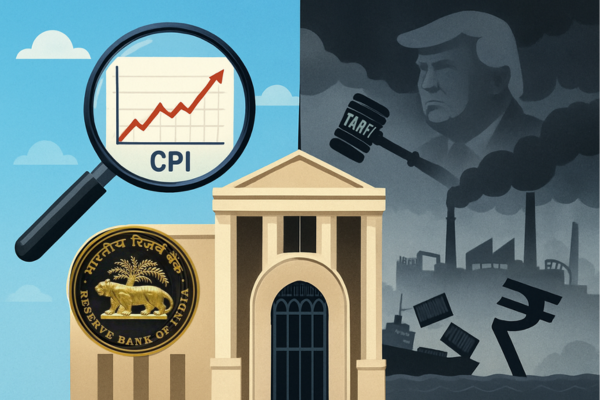.png)

Dr. Srinath Sridharan is a Corporate Advisor & Independent Director on Corporate Boards. He is the author of ‘Family and Dhanda’.
September 25, 2025 at 3:19 PM IST
Jaguar Land Rover has been forced into an unprecedented standstill after a crippling cyberattack shut down its factories, paralysed operations, and left 33,000 employees idle. The company had been negotiating cyber insurance but had not secured cover when the breach struck, exposing it fully to the financial shock. Losses are escalating at nearly £50 million each week, with management warning that production may not resume before October and potentially not until November.
If the disruption culminates in a £2 billion impact, it would exceed JLR’s entire profit after tax for 2025, which stood at £1.8 billion. With the automaker contributing close to 70% of Tata Motors’ total revenue, the implications reach far beyond the marque itself, threatening the financial stability of the parent and testing investor confidence. It is a governance crisis, a supply chain rupture, and a live case study in how a single uninsured breach can destabilise even the most iconic corporations.
This is not just about Jaguar. It is about every boardroom that has underestimated cyber risk. If such an event can destabilise a company with global reach, deep resources, and brand equity, what about companies in India that carry thinner insurance and face sharper shifts in investor confidence? Boards must ask themselves: if this happened to us, what would be the financial impact? Would our insurance respond? Would our reputation recover? Would stakeholders stand by us?
Too many boards still treat cyber threats as operational matters, delegated to the CIO or buried within compliance reports. That mindset is not only outdated, it is reckless in this digital era. Cyber resilience is now a governance issue that sits squarely within the fiduciary duties of directors. Ignoring it exposes boards to liability for failing to prepare for a foreseeable risk. Cyber cover cannot be left to chance and must be a board mandate, anchored at the very top.
The nature of cyber threats has also evolved. No longer confined to crude hacking, today’s risks include ransomware that can lock up critical systems for weeks, phishing schemes that exploit human error, and state-backed breaches targeting intellectual property. Increasingly, the weakest link is not internal IT but third-party vendors and cloud service providers, where a compromise outside the company’s direct control can cascade across operations. Reputational assaults, such as mass data leaks of customer or employee information, now carry penalties under India’s data protection law running into hundreds of crores.
For listed entities, the implications are profound. Market capitalisations are built on confidence, and confidence evaporates at speed when a breach becomes public. Weaknesses in cyber governance can trigger lasting valuation discounts. Boards must recognise that cyber resilience is as important for listed entities as safeguarding public monies is for regulated financial institutions.
Enterprise Risk
Cyber risk is therefore an enterprise risk. It has the power to halt production lines, interrupt customer access, compromise financial systems, and erode brand trust. In its most extreme form, it can tip a solvent business into insolvency within weeks. Shareholder value, employee security, and long-nurtured reputations can all be undone by one breach.
Jaguar Land Rover is a sobering case study. A single breach has spread like contagion across its ecosystem. Suppliers dependent on just-in-time orders face collapse. Dealers and logistics partners are paralysed. Tens of thousands of employees have been stood down. Investors will question not only JLR’s future earnings but also the stability of Tata Motors. A reputation built over decades has been weakened in days. What began as a breach of digital systems has escalated into a governance and valuation crisis.
For directors, the lesson is clear. Cyber resilience must be treated with the same seriousness as financial solvency or regulatory compliance. It belongs at the top of every board agenda. Directors must demand credible frameworks, rigorous testing, transparent disclosures, and adequate insurance.
Boards without a formal cyber risk framework are operating in dangerous delusion. To believe that “this too shall pass” or that others alone will be struck is to misread the nature of the threat. Cyber events are structural risks that test business models, investor confidence, and leadership credibility. A board without a cyber risk framework today is as exposed as one without a financial risk framework in the aftermath of the global financial crisis.
A cyber risk framework is indispensable for three reasons. First, it is a matter of fiduciary duty: directors are accountable for foreseeable risks, and cyber incidents are no longer unforeseeable. Second, it is about enterprise resilience: without defined governance, clear reporting lines and tested recovery plans, a single breach can cripple operations and drain liquidity. Third, it is about market credibility: investors, analysts and rating agencies all scrutinise governance quality, and a board that fails to demonstrate control over cyber risk invites reputational damage and valuation discounts.
Too often, Indian boards still view cyber spending through the narrow lens of compliance. The instinct is to contain costs and hope probability remains in their favour. That mindset is flawed. No board would knowingly leave its factories, its aircraft fleet or its shipping assets uninsured. Why then underinsure the digital backbone that underpins every aspect of the enterprise?
Cyber insurance is not a cure for attacks, but it is a critical layer of resilience. More importantly, the process of securing cover brings its own discipline. Underwriters examine governance maturity, vendor oversight, incident response planning and recovery capacity. This scrutiny is uncomfortable, but it forces management to confront weaknesses that boards might otherwise miss. Without such cover, a company forfeits not only the financial buffer but also the governance discipline that comes with it.
Board Mandate
The question is no longer whether regulators will eventually act. The real question is whether boards themselves are prepared to take responsibility now. Cyber resilience cannot be outsourced to compliance manuals or deferred until government rules compel it. It must be recognised as a duty of governance, as fundamental as financial oversight or audit integrity.
Boards should therefore set their own pathway, one that is transparent to investors and credible in execution. First, directors must acknowledge that cyber insurance is not a technical add-on but strategic risk capital, as essential as any other safeguard of enterprise value. Second, every board should require management to present a formal cyber risk framework, disclose residual exposures, and demonstrate that adequate cover has been secured. Third, directors must ensure that such cover is not superficial. Exclusions, uninsured layers and recovery plans should be scrutinised with the same rigour as debt covenants or capital allocation decisions.
This discipline must be embedded into annual disclosures and risk reports, not because regulators insist on it but because markets and investors deserve nothing less. A company that ignores cyber resilience is signalling complacency about its own solvency. A board that fails to demand action is abdicating its responsibility to shareholders, employees and customers alike.
Would this impose costs? Of course. But the alternative is far more destructive. A single uninsured breach can erase decades of brand equity, trigger investor flight, paralyse supply chains and invite consumer backlash. Trust, once broken, is painfully hard to restore.
To bring this into practice, directors can apply a simple checklist built around the word D.I.G.I.T.A.L.
D.I.G.I.T.A.L. Checklist
D – Disclosure
1. Are we clearly disclosing our cyber risk framework and resilience measures?
I – Insurance
1. Is our cyber cover adequate in scale and scope?
G – Governance
1. Does the board formally oversee cyber resilience?
I – Incidents
1. What are the escalation protocols for notifying the board?
T – Testing
1. Have we stress-tested systems and insurance against worst cases?
A – Accountability
1. Who in management is directly accountable, and is this tied to performance?
L – Liquidity
1. Do we know the liquidity impact of a serious attack?
Cyber resilience is no longer optional; it is survival strategy. One uninsured breach can undo decades of trust and enterprise value. Boards that fail to act today may not have a business left to govern tomorrow.




